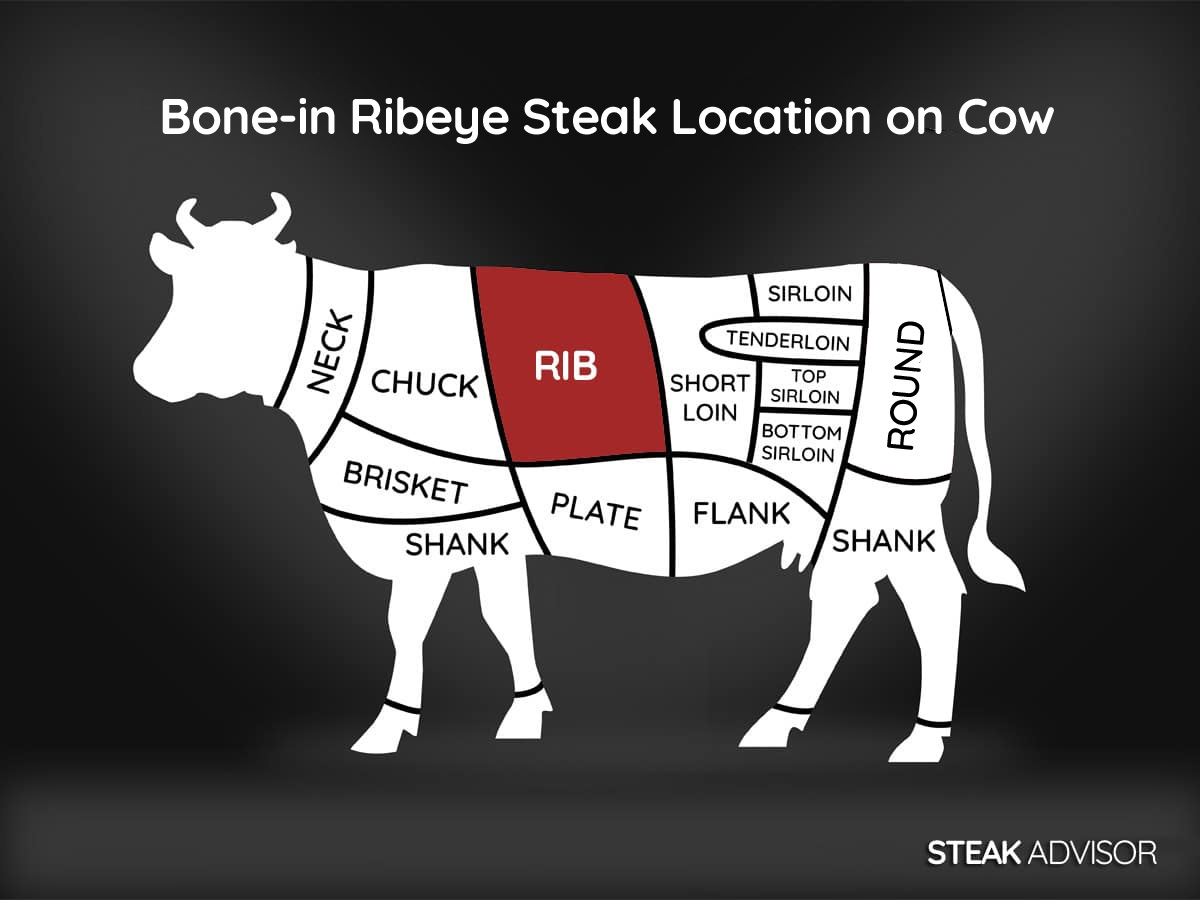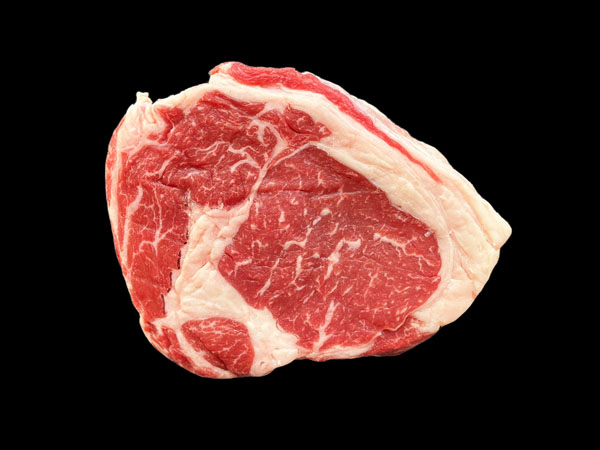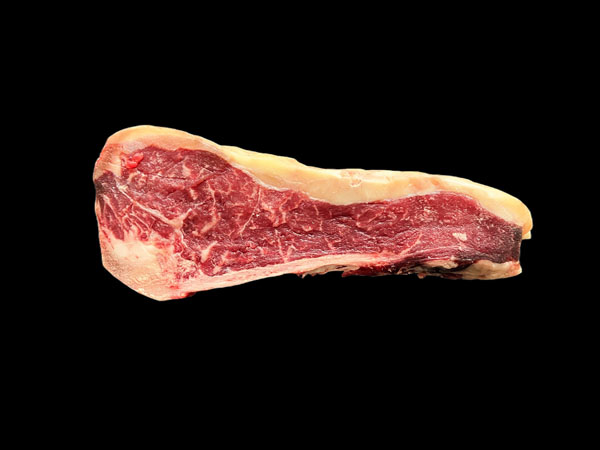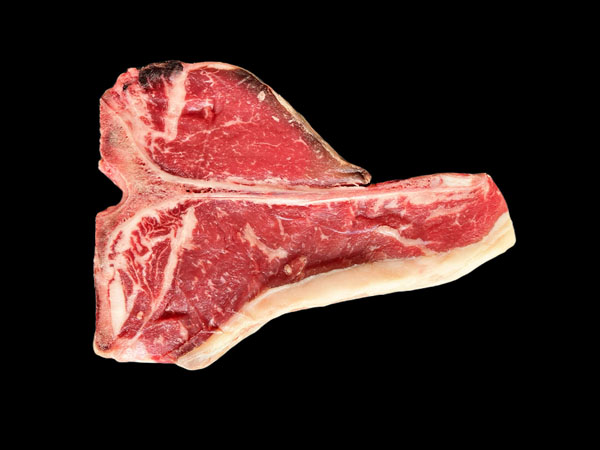The bone-in ribeye steak is one of the most loved premium cuts, and it’s easy to see why. Its rich flavor, beautiful marbling, and incredible tenderness make it a top choice for special occasions. The bone adds to its unique look and enhances the experience of enjoying this cut, whether dining out or cooking at home. In the rest of this article, I’ll share more about what makes the bone-in ribeye so special, where it comes from on the cow, the different names it’s known by, and much more.
What is Bone-in Ribeye Steak?
A bone-in ribeye steak is just a ribeye with the bone still attached. In terms of flavor, it’s pretty much the same as a boneless ribeye since both cuts come from the same part of the cow. The main difference is how it looks and how it cooks. The bone gives it a more impressive appearance and slightly changes the cooking process. The meat near the bone cooks more slowly than the rest, making it more difficult or impossible to cook the steak evenly. That doesn’t affect the overall flavor, though. However, the bone prevents full contact with the pan, so depending on your cooking technique, it might be harder to get that perfect crust.
Bone-in ribeye steak is considered a premium cut for a good reason. It’s more expensive than most steaks but delivers rich flavor, incredible tenderness, and a show-stopping look, making it a favorite for special occasions at home or in restaurants.

What Are the Other Names for Bone-in Ribeye Steak?
Here are the most popular other names for the bone-in ribeye steak in the United States:
- Cote de Boeuf,
- Rib Steak,
- Cowgirl Ribeye,
- Rib Steak Bone-In (Frenched),
- Bone-In Ribeye.
Where Does a Bone-in Ribeye Steak Come From on a Cow?
The bone-in ribeye steak comes from the cow’s rib primal. Located between the chuck and the loin primal, covering ribs 5-6 through 12-13.

Is Bone-in Ribeye Steak Better than Boneless?
Bone-in ribeye steak looks better and can be juicier near the bone, but boneless is better for even cooking and achieving a perfect crust. A bone-in ribeye steak looks more impressive on the plate, and many people enjoy the experience of eating it. One perk of the bone-in version is that you can flip it using the bone, which keeps your hands off the meat (something steak lovers appreciate). But if we’re talking about flavor and tenderness, there’s no difference between bone-in and boneless ribeye steak.
The bone itself doesn’t change the flavor, but the meat near the bone is often juicier. That’s because the bone slows down how fast that part of the steak cooks, helping it stay more moist than the rest.
Boneless ribeye steak, however, is easier to cook evenly and gets a better crust, especially in a pan. The bone can make it harder for the meat to sit flat against the surface, which means the crust might not turn out as good or could end up uneven. Grilling is a different story, though. On a grill, the bone doesn’t cause any issues because the flames and direct heat reach the entire surface of the steak. So, grilling is the way to go if you want the best crust on a bone-in ribeye steak.
Bone-in Ribeye Steak vs. Tomahawk Steak vs. Cowboy Steak
Bone-in ribeye, tomahawk, and cowboy steaks come from the same cut of meat, but the difference lies in the bone. The bone-in ribeye has a short bone that stays close to the meat. The cowboy steak has a bone about 5 inches long, while the tomahawk steak takes it further with an even longer bone that usually extends well past 5 inches. These differences aren’t just about looks. They can also affect how you cook them. The longer bones on the cowboy and tomahawk steaks make them perfect for grilling, while the bone-in ribeye is easier to handle in a regular pan.

What Are the Best Methods for Cooking Bone-in Ribeye Steak?
Here are the best cooking methods for bone-in ribeye steak:
- Pan-searing only: This is a quick and straightforward method of cooking the bone-in steak on a super-hot pan. While it’s fast, it can be tricky with a bone-in steak because the bone can make cooking uneven. It’s great if you’re confident with high-heat cooking, but it might be challenging for beginners.
- Pan-searing and Oven-Finishing: This approach gives you the best of both worlds. Start by searing the steak in a hot pan to get that delicious crust, then finish it in the oven at a lower temperature. It’s great if you’re worried about overcooking since the oven helps you control the internal temperature better.
- Grilling: Grilling is a classic choice for bone-in ribeye. It gives you that perfect charred crust and smoky flavor that’s hard to beat. If you love grilling, this method will give you excellent results every time.
- Sous Vide and Sear: This is a foolproof way to cook a bone-in ribeye perfectly every time. You cook the steak in a water bath to get it exactly how you like it, then finish it with a quick sear for a nice crust. It’s beginner-friendly and super reliable.
- Reverse searing: Reverse searing is another great option, especially if you want even cooking and a beautiful crust. Start by cooking the steak slowly at a low temperature, either in the oven or on a grill, then finish it with a quick, high-heat sear. It’s easy to hit your desired doneness with this method, so it’s perfect for beginners.






